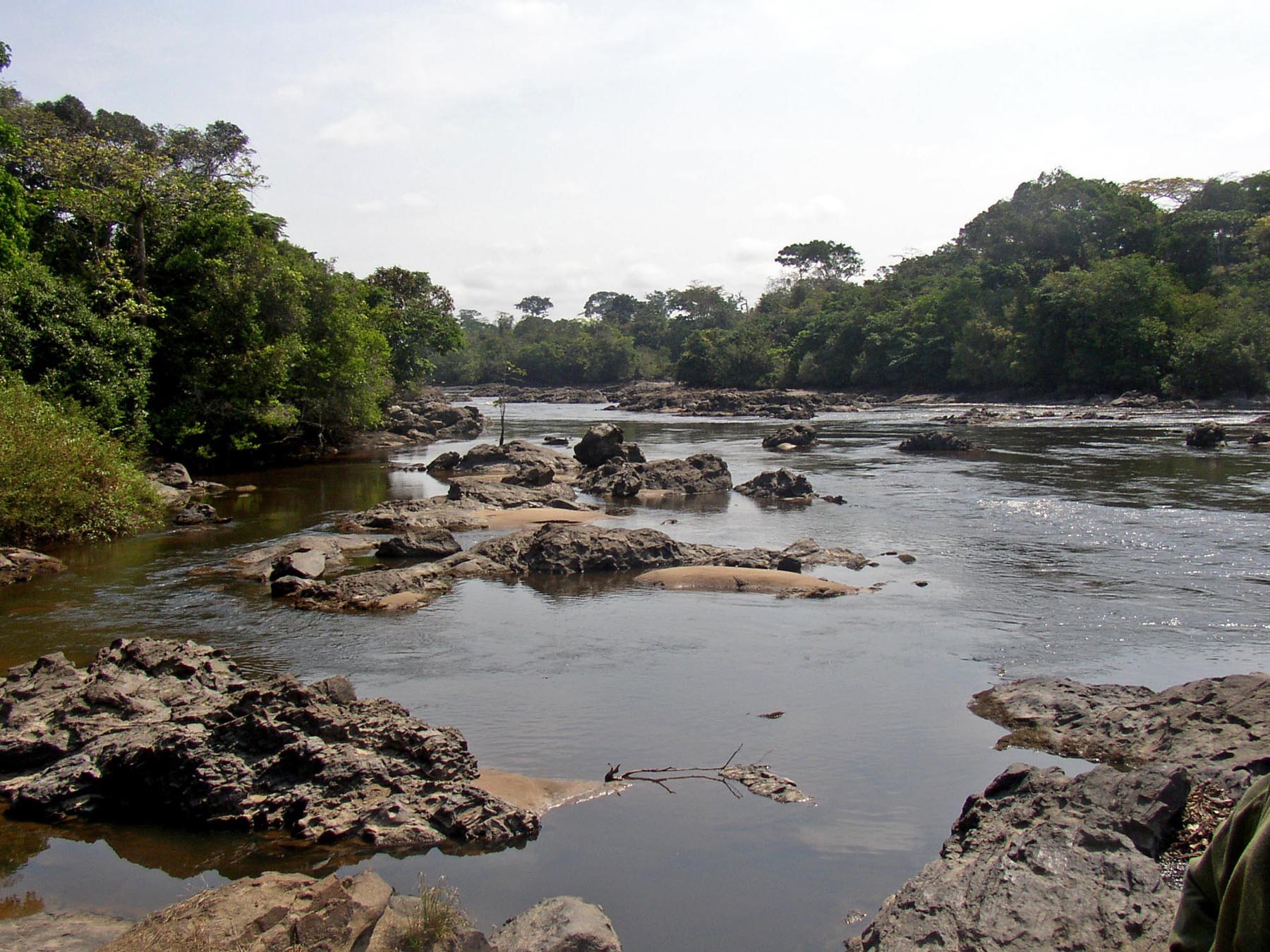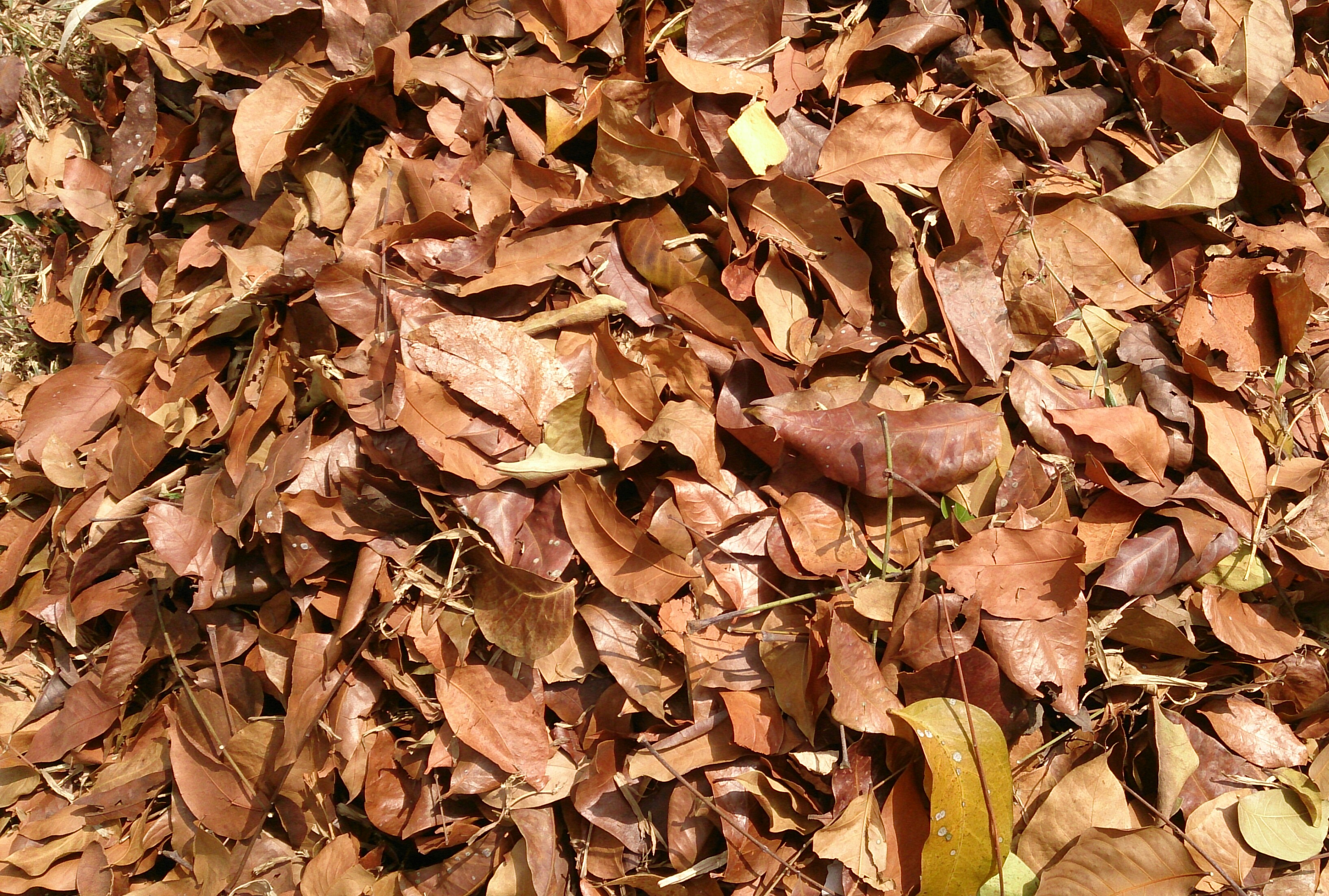|
Guineo-Congolean Rainforest
The Guineo-Congolian region is a biogeographical region in Africa straddling the Equator and stretching from the Atlantic Ocean through the Congo Basin to the Congo / Nile divide in Rwanda and Burundi. Formerly, this region was largely covered in rain forest, on both well-drained sites and in swamp forests, but little undisturbed primary forest now remains, having been replaced in many areas by savanna and secondary-growth forest. Description The Guineo-Congolian region is a tropical, lowland rain forest area, typified by the forests of the Congo Basin. The terrain is generally under and the annual rainfall is typically in the range . The forest is tall with a dense canopy, or more above the ground, with emergent trees up to tall, and with several layers. The constituent trees are mostly evergreen or semi-evergreen, with a scattering of deciduous species. In the wetter areas, the trees may be clad with numerous epiphytes, but these are less common in drier areas. Large trees ... [...More Info...] [...Related Items...] OR: [Wikipedia] [Google] [Baidu] |
Biogeography
Biogeography is the study of the species distribution, distribution of species and ecosystems in geography, geographic space and through evolutionary history of life, geological time. Organisms and biological community (ecology), communities often vary in a regular fashion along geographic gradients of latitude, elevation, allopatric speciation, isolation and habitat species-area curve, area. Phytogeography is the branch of biogeography that studies the distribution of plants. Zoogeography is the branch that studies distribution of animals. Mycogeography is the branch that studies distribution of fungi, such as mushrooms. Knowledge of spatial variation in the numbers and types of organisms is as vital to us today as it was to our early human ancestors, as we adapt to heterogeneous but geographically predictable Natural environment, environments. Biogeography is an integrative field of inquiry that unites concepts and information from ecology, evolutionary biology, taxonomy (bio ... [...More Info...] [...Related Items...] OR: [Wikipedia] [Google] [Baidu] |
Lovoa Trichilioides
''Lovoa trichilioides'', also called African walnut, Congowood, dibetou or tigerwood, is a species of plant in the family Meliaceae. It is found in Angola, Cameroon, the Republic of the Congo, the Democratic Republic of the Congo, Ivory Coast, Gabon, Ghana, Liberia, Nigeria, Sierra Leone, Tanzania, and Uganda. It is threatened by habitat loss Habitat destruction (also termed habitat loss or habitat reduction) occurs when a natural habitat is no longer able to support its native species. The organisms once living there have either moved elsewhere, or are dead, leading to a decrease .... Germination success is somewhat limited by short-lived seeds which are heavily predated. Exploitation rates are high. It is one of the two principal timber species in Congo. References trichilioides Vulnerable plants Taxonomy articles created by Polbot {{Meliaceae-stub ru:Ловоа ... [...More Info...] [...Related Items...] OR: [Wikipedia] [Google] [Baidu] |
Zambezian Region
The Zambezian region is a large biogeographical region in Africa. The Zambezian region includes woodlands, savannas, grasslands, and thickets, extending from east to west in a broad belt across the continent. The Zambezian region lies south of the rainforests of the Guineo-Congolian region. The Zambezian region is bounded by deserts and xeric shrublands on the southwest, the Highveld grasslands of South Africa to the south, and the subtropical Maputaland forests on the southeast. Vegetation types The dominant vegetation types in the Zambezian region include:Emmanuel N. Chidumayo and Davison J. Gumbo, eds. (2010). ''The dry forests and woodlands of Africa: managing for products and services''. Earthscan, 2010. * Dry deciduous forest and scrub forest * Zambezian wooded grassland * Itigi deciduous thicket * Miombo woodland * Mopane woodland * Undifferentiated woodland * Zambezian flooded grasslands and savannas * Zambezian halophytics Biodiversity Botanist Frank White estimated ... [...More Info...] [...Related Items...] OR: [Wikipedia] [Google] [Baidu] |
Ituri Rainforest
The Ituri Rainforest ( French: ''Forêt tropicale de l’Ituri'') is a rainforest located in the Ituri Province of northeastern Democratic Republic of the Congo. The forest's name derives from the nearby Ituri River which flows through the rainforest, connecting firstly to the Aruwimi River and finally into the Congo. Geography The Ituri Rainforest is about in area, and is located between 0° and 3°N and 27° and 30° E. Elevation in the Ituri ranges from about . The climate is warm and humid, as exemplified by the nearby city of Bunia, which however is at a slightly higher elevation. About one-fifth of the rainforest is made up of the Okapi Wildlife Reserve, a World Heritage Site. It is also the home of the Mbuti pygmies, one of the hunter-gatherer peoples living in equatorial rainforests characterised by their short height (below , on average). They have been the subject of research by a variety of outsiders, including Patrick and Anne Eisner Putnam, who lived on the b ... [...More Info...] [...Related Items...] OR: [Wikipedia] [Google] [Baidu] |
Monodominance
Monodominance is an ecological condition in which more than 60% of the tree canopy comprises a single species of tree.Peh, Kelvin S.-H.; Lewis, Simon L.; Lloyd, Jon (July 2011). "Mechanisms of monodominance in diverse tropical tree-dominated systems". Journal of Ecology (British Ecological Society) 99 (4): 891–898.doi:10.1111/j.1365-2745.2011.01827.x.-Prebble, Matthew; Kennedy, Jean; Southern, Wendy (2010). "Holocene lowland vegetation change and human ecology in Manus Province, Papua New Guinea". In Haberle, S.; Stevenson, J.; Prebble, M. Altered Ecologies: Fire, Climate and Human Influence on Terrestrial Landscapes. Terra Australis Series 32. ANU E Press. . Monodominant forests are quite common under conditions of extra-tropical climate types. Although monodominance is studied across different regions, most research focuses on the many prominent species in tropical forests. Connel and Lowman, originally called it single-dominance.Connel, Joseph H.; Lowman, Margaret D. (1989). "L ... [...More Info...] [...Related Items...] OR: [Wikipedia] [Google] [Baidu] |


